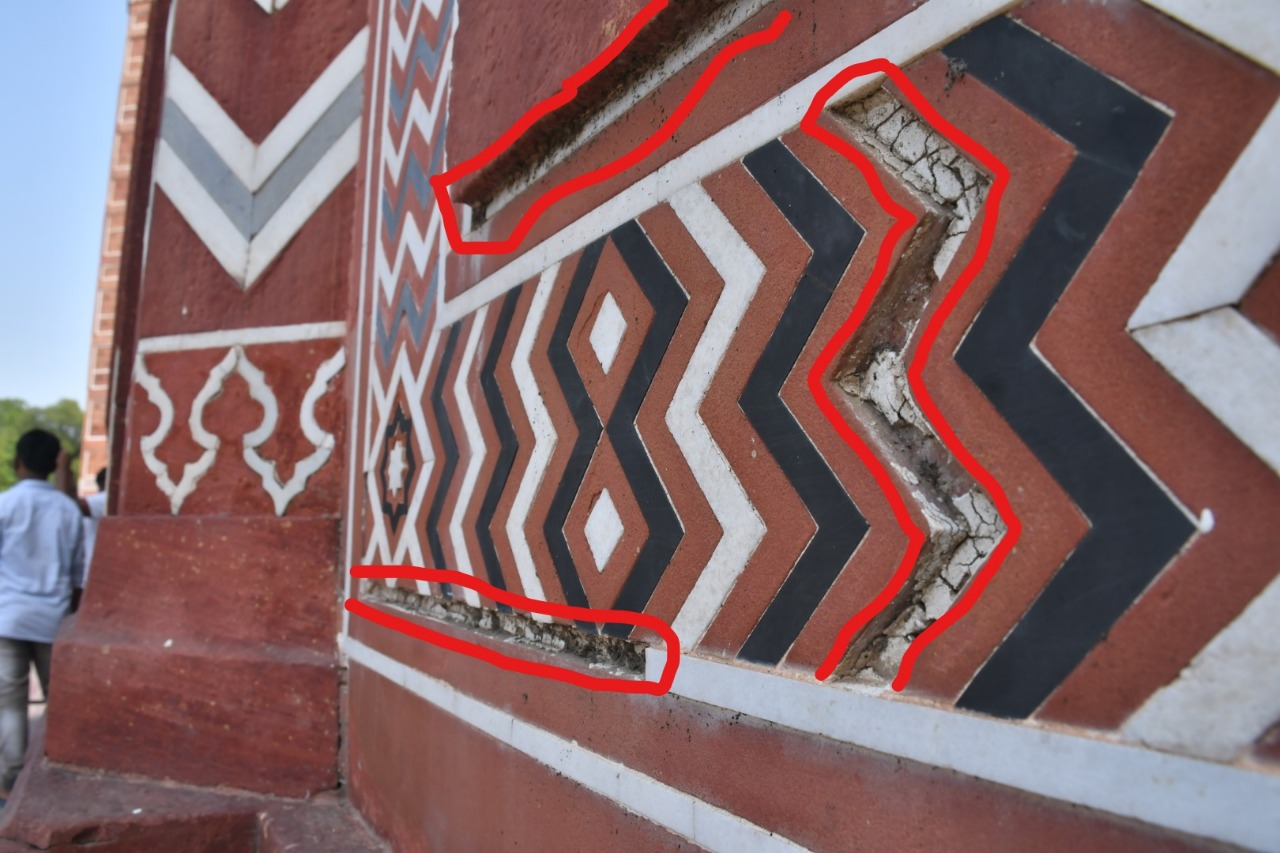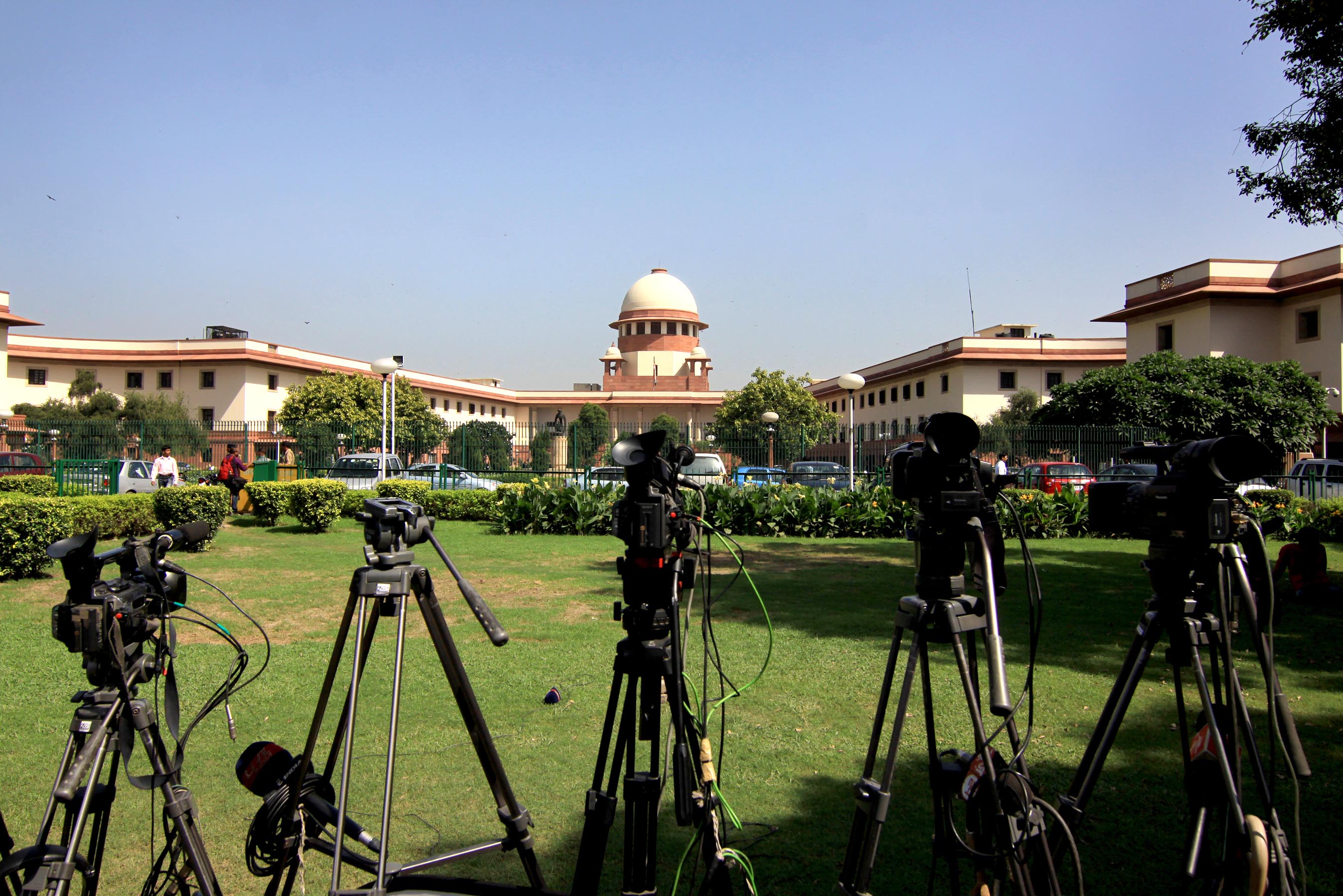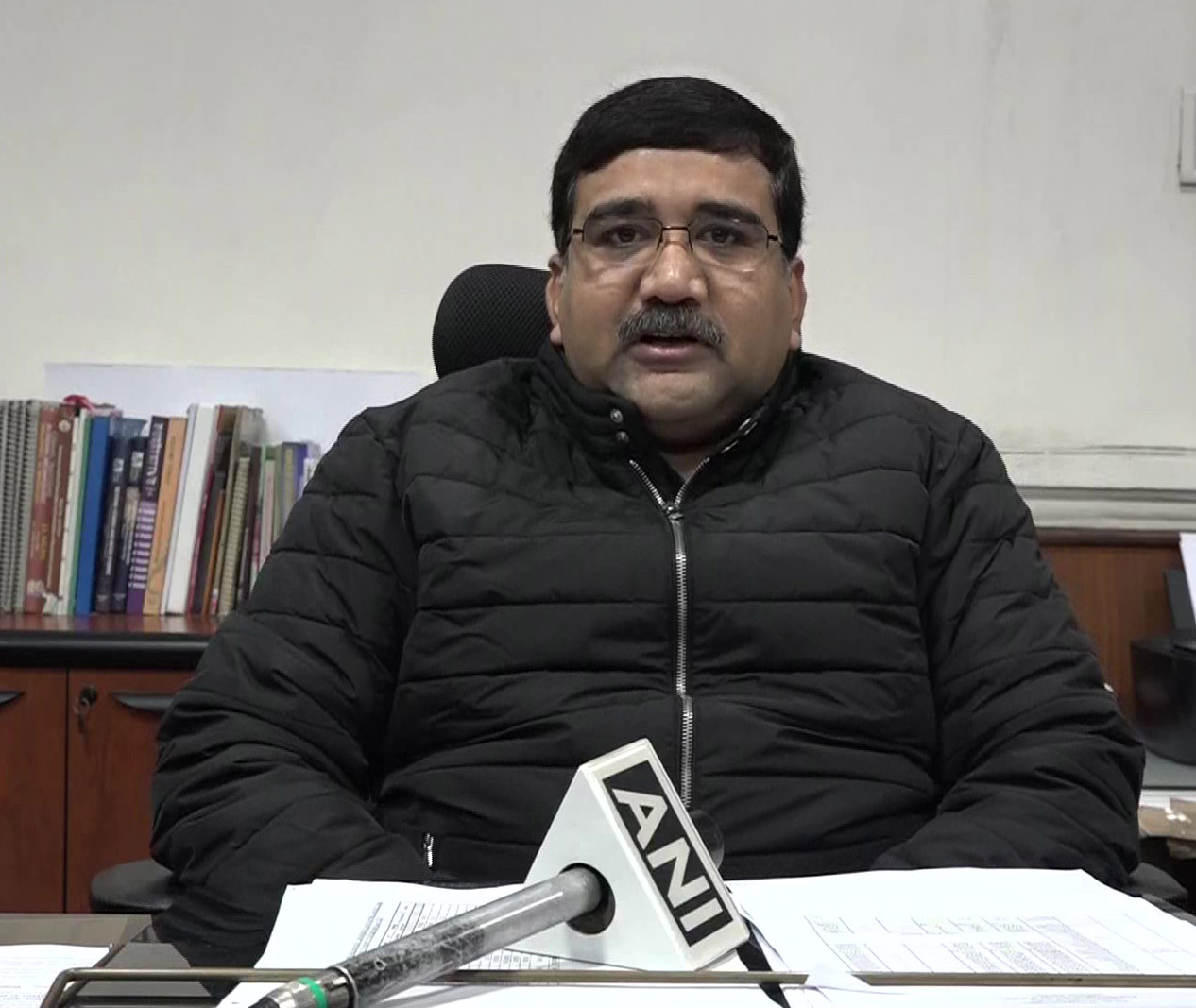
Many precious stones have gone missing from the country’s most-loved monument. And there is no clue as to their whereabouts, reveals an investigative report by Tehelka SIT.
“You can shut down the Taj. You can demolish it, if you like. You can also do away with it”. That stinging comment from the Supreme Court on July 11, 2018 had ignited a debate of unusual interest over preserving India’s most-loved and most-visited monument. It was another judge of the Supreme Court who raised yet another red flag. In September 2015, when justice Kurian Joseph visited the Taj Mahal with his family, something caught his eyes: fumes of acrid black smoke coming towards the monument. It emerged from a crematorium, Mokshadham, nestled between the Taj and the Agra Fort. In a letter to the then Chief Justice of India, Justice Joseph sought the intervention of the apex court. Should the crematorium be shifted or should chimneys with wet scrubbers be installed to ensure zero carbon emission? But efforts to shift the cremation site have not worked. [They hadn’t worked even when the Dr. S.Varadarajan committee on atmospheric environmental quality and preservation of the Taj Mahal suggested its removal in 1994]. This is one of the four official burning ghats in Agra. But, it is the most used, with up to 100 bodies burnt every day, each requiring about 300 kg of woods, informs a source.
Lawyer M.C. Mehta’s public interest litigation in the 1980s had resulted in the stringent orders against the Mathura oil refineries for significantly reducing ambient air quality around the Taj. Since then, the Supreme Court has directed action to clean the Taj, declaring 10,400 square kilometers of area the Taj Trapezium Zone [TTZ], closing down or relocating polluting units. Mehta has alleged that the upkeep of Taj is in a shambles. The colour of the marbles has toned down, cracks are appearing, minarets are showing signs of tilting, material are falling off, chandeliers are crashing, CCTVs don’t work, drains around the area are clogged, illegal encroachments, industries and activities are mushrooming in the vicinity, while a dying Yamuna is putting the foundation of the Taj at risk and also promoting invading insects. Pollution is still the biggest problem.
A lot has been written in media on these challenges faced by Taj Mahal. But no media attention has been given to the missing precious and semi-precious stones from the Taj Mahal. Tehelka carried out an investigation to know where the precious and semiprecious stones of the Taj Mahal are going? The investigation is based on several RTIs, which focussed on the missing stones of the Taj Mahal. On viewing the Taj Mahal closely, one finds many marble green leaves missing. In parts, whole segment of semi-precious stones are missing. An official of the Archaeological Survey of India [ASI], responsible for the maintenance of the Taj, on the condition of not naming him said, “Many tourists come and use their keys to take inlay pieces out”. But when asked from where the tourists get the keys, when all pointed elements carried by the tourists are taken away from them at the Taj entry by the security staff, the official failed to comment.G. Kishan ReddyG. Kishan Reddy

It is said that Taj Mahal changes its colour thrice in a day. It looks more white on cloudy days. Not many people would know about the changing colours of the Taj Mahal. According to the ASI and a senior tour guide of Agra, Taj Mahal is made of several colourful precious stones, which is responsible for the monument changing its colour thrice a day. These stones are Neelam, Panna, Ruby, Aqeeq, Moonga and Firoza. According to the experts, the main white marble mausoleum is made of such precious stones. These stones are also found on the other parts of the monument and on the Royal Gate of the Taj Mahal. Experts say such

precious stones are responsible for making the main mausoleum more colourful and beautiful not only in sunlight but also on full moonlight, where people used to gather in a big way to get a glimpse of Taj in full moon light called “Chamki.” However, this has become a history now because the entry to the Taj has been banned now on the full moon light due to security reasons.
The precious stones of the Taj Mahal are missing not only from the Royal Gate but from the other parts of the monument as well. This was revealed in RTI reply. In reply to an RTI application, the ASI has admitted that it has issued a tender for the repair work of the Taj Mahal. As per the two RTI replies, the ASI disclosed that from the year 2015-16 to the year 2018-19, before the Covid lockdown, the agency had spent lakhs of rupees for filling the gaps of the missing precious stones of the Taj Mahal. But when asked about the missing precious stones of the Taj Mahal through RTI, the [ASI] officials replied as follows:
Questions posed in the RTI:
[ 1 ] What ASI does with the precious stones of the Taj Mahal, which comes out from any part of the monument or get broken after falling down on the ground ?
[ 2 ] Where the fallen and broken precious stones of the Taj Mahal are kept by the ASI. And how many precious stones of such kind, fallen from which part of the monument, are with the ASI ?
[ 3 ] How many incidents have occurred in any part of the Taj Mahal, where the precious stones have fallen naturally and broken down. But ASI have not recovered the fallen and broken precious stones from the spot?
[ 4 ] How many incidents have been detected by the ASI at the Taj Mahal indicating that someone has taken inlay pieces out ?
ASI’s replies to RTI posers
[1 ] Broken stones damaged badly are removed permanently. Less damaged stones are kept for re-use.
[ 2 ] We don’t have any records of such stones.
[ 3 ] We don’t have any record of this.
[ 4 ] ASI also doesn’t have any records as to when such precious stones have started coming out and falling down from the mausoleum. ASI also doesn’t have any record of number of missing stones incidents from the Taj Mahal between the year 2011 to 2021.
When asked who does the inlay work at the Taj, the ASI says it doesn’t hire any agency for the repair work, but it does it itself.
When asked through RTI about the amount ASI spent on fixing stones in the gaps left behind by the missing stones of the Taj Mahal from the year 2011 to 2021, the ASI replied that only four times during this period they have undertaken the stone work. The amount spent by the ASI on such work is as follows, said the ASI.
[ 1 ] In 2018-19 Rs 51 lakh worth stone work was done at the Taj Mahal.
[ 2 ] In 2017-18, Rs 42 lakh worth stone work was done at the Taj.
[ 3 ] In 2016-17 Rs 20 lakh worth stone work was undertaken in the monument.
[ 4 ] In 2015-16 also stone work was done, but the expenditure shown in RTI reply was Rs 12141, which looks incomplete after watching the inlay work done at Taj. When countered, the central information officer refused to give any other information apart from the one given in RTI.
Royal Gate most affected
According to the information received through RTI on the missing stones of the Taj Mahal, Royal Gate of the monument is the spot from where maximum number of cases of missing stones were found. According to the first RTI reply in 2015-16, 2016-17, 2017-18, thrice ASI has undertaken the stone repair work on the Royal Gate of the monument, amount of which has been in lakhs. In 2017-18, Rs 42 lakh were spent on the repair work. In 2016-17, Rs 20 lakh worth repair work was done.

And in the year 2015-16, Rs 12141 were spent on the repair work. This figure looks incomplete. According to the people who do inlay work, amount of Rs 12141 is nothing for the inlay work. The labour who do inlay work charges more than that.
Apart from this, in 2018-19, ASI spent Rs 50.92 lakh on the inlay work in the Taj Mahal. Royal Gate is the spot which has reported the maximum number of missing stones cases. This was revealed in an RTI. The ASI has not given any stone missing information from any other part of the Taj Mahal.
The information received through two RTIs from the Agra circle ASI shows that the department is giving wrong information on the amount spent on the inlay work carried out at the Taj Mahal. According to the first RTI, the ASI accepted that in the year 2015-16 to 2021, thrice in the years 2015-16, 2016-17 and 2017-18, inlay work was carried out at the Taj Mahal. But through the second RTI when information was sought from the ASI about the inlay work carried out at the Taj Mahal during the year 2011 to 2021, the ASI gave only one year 2018-19 inlay work information to us. Why ASI is hiding inlay work information? Why in reply to two RTIs, the ASI is giving two different information on inlay work ? These questions can only be best answered by the ASI itself.
Types of stones the Taj is made up of
If we believe the two books “The Taj and its environment” by Maulvi Moinuddin written in 1924 and “The immortal Taj Mahal” by historian R.Nath, written in 1970, the Taj Mahal is made up of 42 precious stones. Maulvi Moinuddin’s book revealed the number of stones and their origin, from where they were brought to built the Taj Mahal. If we believe his book, the names and number of stones and from where they were brought to built the Taj Mahal are as follows:
[ 1 ] Aqeeq– Baghdad– 540
[ 2 ] Firoza– Tibet–670
[ 3 ] Moonga–Indian– 143
[ 4 ] Neelam—Origin unknown — 74
[ 5 ] Jawaharaat—Origin unknown– 42
[ 6 ] Ruby– Badaksaal– 142
[ 7 ] Heera–Panna– 625
[ 8 ] Pukhraj– Origin unknown — 97
[ 9 ] Abri– Gwalior– 427
[ 10 ] Garnet– Ganga– 52
Apart from these stones, one lakh seep were also used in building the Taj Mahal. Stones Sang-e-Moosa was also used in building the monument. But it has been largely missing from the walls of the Taj Mahal.
In reply to an RTI request as to how many incidents of broken and fallen stones have been reported from the Taj Mahal during the year 2011 to 2021, the ASI says it has no such record. On the other hand, a few media reports of 2015 and 2016 have reported five incidents of stones falling from the monument. Out of these, two incidents were reported from the Taj minarets. From these minarets, stone Sang-e-Moosa fell down on the ground. The media reported all these incidents. But according to RTI reply, ASI has no such record of fallen stones of the Taj Mahal. Stones Sang-e-Moosa can be spotted not only in Taj’s minarets but in other part of the monument too. Sang-e-Moosa stone was used to make the Taj walls more beautiful. Like in Taj, in white minarets, Sang-e-Moosa was used to make them more attractive.
Incidents which happened in two years
[ 1 ] In December 2015, stones fell down from the Taj Mahal’s minarets
[ 2 ] In April 2015, stones fell down from the Royal Gate of the Taj.
[ 3 ] In May 2015, a stone fell down from the Sarhindi Begum tomb.
[ 4 ] In June 2015, black stones fell down from the Royal Gate of the Taj.
[ 5 ] In July 2016, stones fell down from the south-west minarets of the Taj.
If experts and media reports are to be believed, Sang-e-Moosa stones often fall down from the Taj minarets. To make Taj minarets more attractive it was made of three stones, including stone Sang-e-Moosa. All Taj minarets are made of white marble. On 12th September 2021, an RTI request was sent to ASI asking information regarding the inlay work done in the minarets after the stones fell down. In the RTI, the information of the inlay work done in the Taj minarets during the year 2011 to 2021 was sought. According to the rule, the applicant should get RTI reply within 30 days. But in this case, the applicant got RTI reply in 38 days. That too, an incorrect one. Information was sought regarding the Taj Mahal’s minarets. But ASI replied about the walls of the Agra fort. When the applicant went for the first appeal. The appeal officer replied that the information applicant sought has been given to him. That meant that even the appeal officer didn’t check whether the answer given to the applicant match with applicants’s RTI question or not.
An ASI official, who served in the Taj Mahal on the condition of not publishing his name told Tehelka, “Whenever any precious stone falls down from the Taj Mahal, the rules say it should be tested first to see whether it is fit for re-use or not. If it is found fit in the test. Then it is re-used at some other place. If found not fit for use, then after some writing formalities it is sent to the Taj museum. If the quantity of unfit stones are more, then the rule says it should be sent to other ASI museum”.
While speaking to Tehelka, senior tour guide and the president of the Guides Association of Agra, Shamshuddin said, “In the making of the Taj Mahal very expensive stones were used. It becomes even more expensive in the present time. They are more than 400 years old. Above all their value is enhanced by the fact that were used in the Taj Mahal. Whether the fallen stone belongs to the Taj Mahal can be judged by the sign left on those stones by the artisans who built Taj Mahal.”
If Shaalu, Inlay worker and a resident of Tajganj Agra is to be believed, for any Inlay work — whether on a building or any decorative item — three artisans are required. One for cutting stones; second for carving stones; and third for fixing that stone in the main building. But the ASI has hired only one employee instead of three for the Inlay work. That too in the year 2000, revealed an RTI. How ASI is getting the inlay work done through one employee can be best answered by only the ASI. Presently, this employee too has been assigned some other job instead of inlay work.
Stones go missing from Fatehpur Sikri too
Fatehpur Sikri is known for sufi saint Hazrat Sheikh Salim Chisti’s Mazaar. Some believed that he was a guru of Mughal emperor Akbar. While entering the main building from Buland Darwaza, one can spot the Mazaar of the Sufi saint. This Mazaar was also made up of precious stones and seep. Attractive paintings can be spotted on the walls of Dargaah. But even from this Dargaah, precious stones are missing. Even the seep found on top of the sufi saint grave are found missing. The number of missing seeps and stones run into thousands.
Tourists coming to Fatehpur Sikri would not have known about the missing colourful stones from the Dargaah. It was only after ASI issued an estimate tender for the repair work at Dargaah, that people came to know about the missing stones from the Dargaah. In this ASI tender estimate, it was clearly stated which work to do and which stone is to be used. This estimate report mentioned the colourful stones. The report carries the information regarding the stones for inlay work and what quantity of stone is required.
The Stones demanded by ASI.
[ 1 ] 196 yellow tiger marble
[ 2 ] 21 yellow star marble
[ 3 ] 161 black star marble
[ 4 ] 213 black half star marble
[ 5 ] 318 black marble
[ 6 ] 89 tiger marble, half singara
[ 7 ] 32 yellow half star marble
[ 8 ] 20051 seep.
Note: According to the estimate report the cost of all colourful stones are between Rs 600 per piece to Rs 5000 per piece.
According to the RTI reply, ASI in the year 2019-20 and 2020-21 spent Rs 50 lakh for the repair work in Fatehpur Sikri Dargaah. They spent Rs 50 lakh on the repair work of Dargaah roof. Broken and weak stones were replaced by the fresh ones. Painting and inlay works were also done. Despite this, the seep from the top of Dargaah’s grave and pillar are missing. And hardly any seep is left on the two pillars. Colourful paintings from the walls are in a bad shape. Sources say that in Dargaah, Rs 70 lakh were spent on the repair work, and not Rs 50 lakh as told by the ASI. In Taj Mahal inlay work case also, the ASI gave two different replies in two different RTIs.
When Pune-based Trust left in a huff
After watching the condition of Fatehpur Sikri Dargaah, the Pune–based Uttara Devi Trust sent a proposal to ASI for its repair, for which they were willing to pay. Just after the paperwork between the trust and ASI was completed, the trust started releasing the fund. If sources are to be believed, the trust offered to spend Rs 1 crore on the repair work of Dargaah. But RTI revealed that so far only Rs 50 lakh worth work was done in Dargaah. Sources say that the trust has already spent Rs 70 lakh on the Dargaah’s repair. But dissatisfied with the working style, the trust withdrew the offer and left Agra after spending Rs 50 or 70 lakh, whichever figure is correct, on the Dargaah repair. When contacted, the Uttara Devi Trust official refused to comment saying, “We have spent money we wanted to spend on Dargaah repair.” He refused to comment further on this issue. But some trust members are still residing in Fatehpur Sikri feeding 550 poor persons daily.
When contacted for his version on the issue of missing stones of Taj Mahal, R.K. Patel, the superintendent of ASI, Agra circle, says “Not only in Taj Mahal, but in all the monument where inlay work has been done, we try to re-use the fallen stones. Sometimes, we get complaint of stones getting cracks after they fall down from the main monument. Sometimes a substance used for fixing the stones in the walls releases the stone. In that case we try to fix that stone again”. “If sometime the stone is not in a condition of re-use, then we use another piece at that place. But number of such stones is less”. But when asked repeatedly about the stones which are left behind, Patel gave no direct answer but instead said, “What we will do with any material, it all depends on the condition. For that we use our experience too, which thing to use where, and lots of methodology is involved in it. No one or two methods are involved in this”. “What we do with the fallen out stones, we have already replied that in RTI,” adds Patel. But in reality no such reply has been given in the RTI. The ASI has even denied keeping record of such fallen stones of the Taj Mahal in the RTI. In the end, Patel invited us to his office for answering all our questions.
ASI boss’s take on the issue
When contacted for his version on the missing stones of the Taj Mahal, ASI director of conservation and public relation officer [PRO] Vasant Kumar Swarnkar said, “ Fallen stones are preserved in various ways.

Fallen stones of the monument which are not fit for re-use are sent to ASI museum. Sometimes they are sent to ASI stone testing lab. Sometimes these stones are sent to some universities, colleges and institutes for research purpose of the students”.












